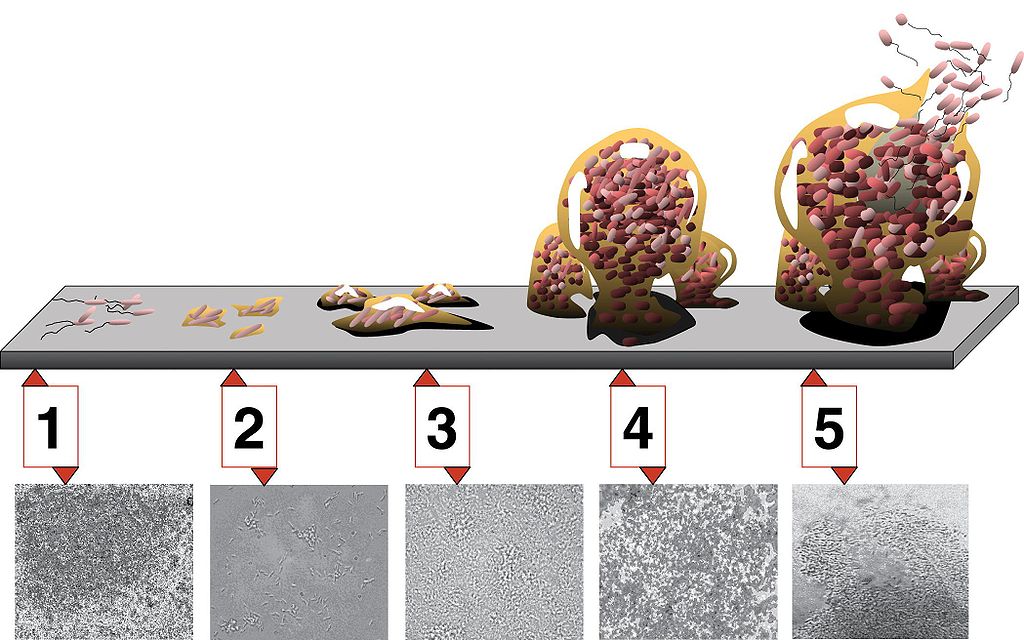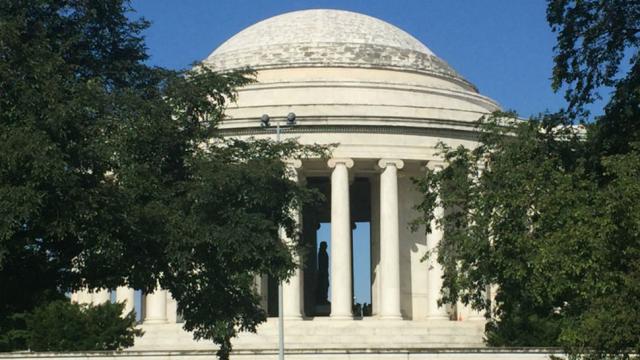The National Parks Service is facing a new threat, and it’s not a wild horde of honey badgers. It’s living slime.
Lead Image: The Jefferson Memorial is being covered in slime. Photo Credit: National Parks Service
The organisation released a statement on Wednesday that explained the grey stuff taking over the top of the dome on the Thomas Jefferson Memorial isn’t mould or dirt, but biofilm: a group of microscopic organisms. It’s actually been spotted on a number of Washington, D.C. landmarks, such as the Lincoln Memorial, and officials are unsure as to where it comes from.
“The increased presence of biofilm presents a new challenge in the care of memorials throughout the National Mall,” said Gay Vietzke, superintendent of National Mall and Memorial Parks, in the statement. “We are continuing to study biofilm and research treatment methods, and look forward to restoring the dome to its original lustre while ensuring its long-term preservation.”
Biofilm can form any where microorganisms can attach to a surface, either on their own or with the help of earlier organisms, often being attracted to moist surfaces. According to the Center for Biofilm Engineering at Montana State University, within moments of attaching to a surface, they start producing slimy extracellular polymeric substances, which gives the slime its shape. After reaching maturity, the biofilm will spread, whether by detachment of slime clumps or by dispersal, as seen in the chart below.

Photo Credit: D. Davis/Wikimedia Commons
It’s unclear what effect the biofilm is having on the monument, since it normally isn’t made up of one type of organism and it doesn’t have a specific class alignment. Some biofilms are bad, such as dental plaque, but some have some positive uses, according to Popular Science, such as the ability to clean up artwork.
Officials first noticed the slime on the memorial in 2006 and have been closely monitoring it since 2014. What Parks staffers understand about biofilm is that it needs a place to grow with plenty of nutrients, and often is found on stone. The dome on the memorial used to be smooth, but has eroded over the years, providing plenty of cracks for the slime to spread.
Therefore, researchers don’t have a set treatment plan, although it is possible to treat (a case of it was treated at the D.C. War Memorial in 2011). The Parks Service has recently began testing ten different chemical biocides on small patches at the memorial to see how they will be effected. It also plans to use non-traditional methods, such as irradiation with lasers, if need be.
In the meantime, you can look up and enjoy the fact that the major plot point in Ghostbusters II has a little scientific weight.
